What happened to Complexity? A review of definitions, measurement and challenges
The widely recognised multi-compositionality of linguistic complexity has led scholars to formulate several definitions of the construct according to the perspective taken on the matter in each field. The measurement of English complexity, in particular, seems to have long relied on a few indices, mainly lexical and morpho-syntactic, which in some cases appear to have been preferred over other measures for their ease of computation rather than methodological effectiveness. The picture of complexity emerging from the present review is that of a construct that often still lacks a thorough and shared definition and operationalisation. Notwithstanding these issues, it is argued that investigating linguistic complexity is still important and its study becomes more tractable when 1) it is carefully discerned from cognitive complexity (i.e., difficulty), thus when the linguistic forms characterising a text and their functions are studied separately from the implications these have on cognitive processing; 2) resorting to evidence-based inductive approaches, which reduce the impact of the set of a priori assumptions inherited from traditional categories of linguistic analysis about how language works; 3) adopting a register-functional approach, which adds an explanatory dimension to the study of linguistic complexity by taking into account how the communicative purposes, the type of audience and the production circumstances of a text influence its complexity.
Figures
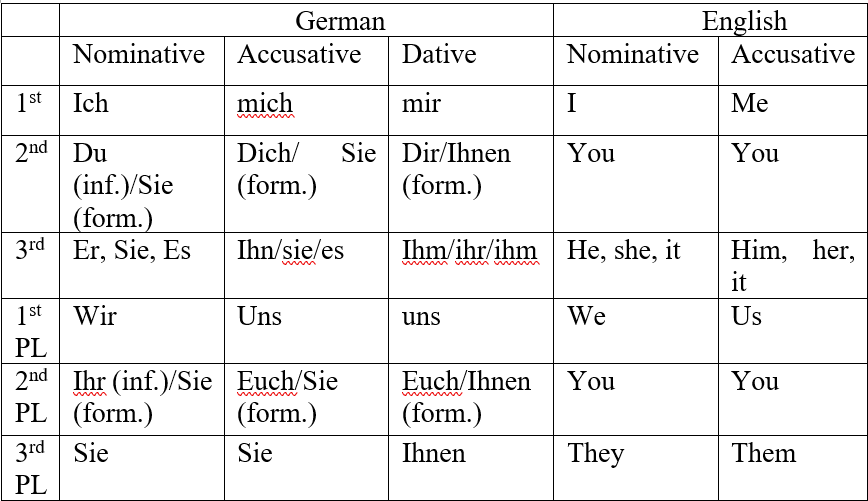
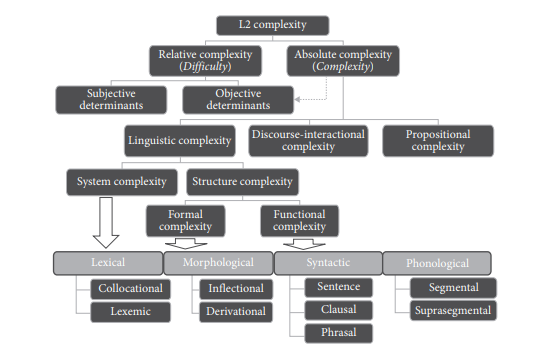
Galiano, L. (2025). What happened to Complexity? A review of definitions, measurement and challenges, Research Result. Theoretical and Applied Linguistics, 11 (3), 3-25.
Research Result. Theoretical and Applied Linguistics is included in the scientific database of the RINTs (license agreement No. 765-12/2014 dated 08.12.2014).
Журнал включен в перечень рецензируемых научных изданий, рекомендуемых ВАК
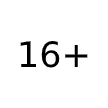
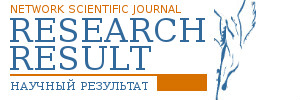









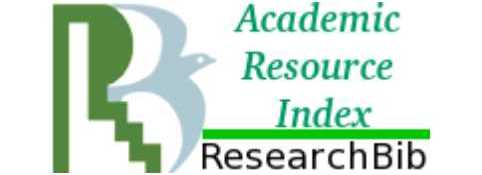


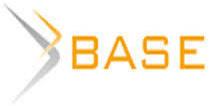



While nobody left any comments to this publication.
You can be first.
Arends, J. (2001). Simple grammars, complex languages, Linguistic Typology, 5 (2/3): 180–182. (In English)
Bell, R. C. (2004). Cognitive complexity. The Internet Encyclopaedia of Personal Construct Psychology. The Psychology of Personal Constructs. URL: http://www.pcp-net.org/encyclopaedia/title.html [Last accessed 30 October 2023] (In English)
Biber, D., Johansson, S., Leech, G., Conrad, S. and Finegan, E. (1999). Longman Grammar of Spoken and Written English, Pearson, Harlow, UK. (In English)
Biber, D., Johansson, S., Leech, G., Conrad, S. and Finegan, E. (2021). Grammar of Spoken and Written English, John Benjamins, Amsterdam/Philadelphia, Netherlands/USA. https://doi.org/10.1075/z.232 (In English)
Biber, D., Gray, B., Staples, S. and Egbert, J. (2022). The Register-Functional Approach to Grammatical Complexity: Theoretical Foundation, Descriptive Research Findings, Application, Routledge, New York/London, USA/UK. https://doi.org/10.4324/9781003087991 (In English)
Bieri, J. (1955). Cognitive complexity-simplicity and predictive behavior, The Journal of Abnormal and Social Psychology, 51 (2), 263–268. https://doi.org/10.1037/h0043308 (In English)
Bisang, W. (2009). On the evolution of complexity: sometimes less is more in East and mainland Southeast Asia, in Sampson, G., Gil, D. and Trudgill, P. (eds.), Language Complexity as an Evolving Variable, Oxford University Press, Oxford, UK, 34–49. https://doi.org/10.1093/oso/9780199545216.003.0003 (In English)
Bley-Vroman, R. (2002). Frequency in production, comprehension and acquisition, Studies in Second Language Acquisition, 24 (2), 209–213. https://doi.org/10.1017/s027226310200205x (In English)
Booij, G. (2012). Construction morphology: a brief introduction, Morphology, 22, 343–346. https://doi.org/10.1007/s11525-012-9209-x (In English)
Botel, M., Dawkins, J. and Granowsky, A. (1973). A Syntactic Complexity Formula, in MacGinitie, W. H. (ed.), Assessment Problems in Reading, DE: International Reading Association, Newark, USA, 77–86. (In English)
Brown, R. (1973). A first language, Harvard University Press, Cambridge, UK. (In English)
Bulté, B., Housen, A. (2012). Defining and operationalising L2 complexity, in Housen, A., Kuiken, F. and Vedder, I. (eds.), Dimensions of L2 Performance and Proficiency: Investigating Complexity, Accuracy and Fluency in SLA, John Benjamins, Amsterdam/Philadelphia, 21–46. (In English) https://doi.org/10.1075/lllt.32.02bul
Burleson, B. R., Caplan, S. E. (1998). Cognitive complexity, in McCroskey, J. C., Daly, J. A., Martin, M. M. and Beatty, M. J. (eds.), Communication and personality: Trait perspectives, Hampton Press, Creskill, USA, 233–286. (In English)
Bygate, M. (1996). Effects of task repetition: Appraising the developing language of learners, in Willis, J. and Willis, D. (eds.). Challenge and change in language teaching, Heinemann, London, 136–146. (In English)
Bygate, M. (1999). Quality of language and purpose of task: Patterns of learners’ language on two oral communication tasks, Language Teaching Research, 3 (3), 185–214. (In English)
Bybee, J. (2008). Usage-based grammar and second language acquisition, in Robinson, P., Ellis, N. C. (eds.), Handbook of Cognitive Linguistics and Second Language Acquisition, Routledge, New York, USA, 216–236. https://doi.org/10.4324/9780203938560-18 (In English)
Byrnes, H., Sinicrope, C. (2008). Advancedness and the development of relativization in L2 German: A curriculum-based longitudinal study, in Ortega, L., Byrnes, H. (eds.), The Longitudinal Study of Advanced L2 Capacities, Routledge, London, UK, Chapter 7 pt. II. https://doi.org/10.4324/9780203871652 (In English)
Candlin, C. (1987). Towards task-based language learning, in Candlin, C. and Murphy, D. (eds.), Language learning tasks, Prentice-Hall, Englewood Cliffs, USA, 5–22. (In English)
Carter, R., McCarthy, M. (2006). Cambridge Grammar of English, Cambridge University Press, Cambridge, UK. https://doi.org/10.4312/vestnik.1.207-211 (In English)
Caruana, S. (2006). Trilingualism in Malta. Maltese, English and Italiano Televisivo, International Journal of Multilingualism, 3 (3), 159–172. https://doi.org/10.2167/ijm024.0 (In English)
Chomsky, N. (1957). Syntactic Structures, Mouton de Gruyter, Berlin/New York. (In English)
Collentine, J. (2004). The effects of learning contexts on morphosyntactic and lexical development, Studies in Second Language Acquisition, 26 (2), 227–248. https://doi.org/10.1017/s0272263104262040 (In English)
Dahl, Ö. (2004). The growth and maintenance of linguistic complexity, John Benjamins, Amsterdam, Netherlands. https://doi.org/10.1075/slcs.71 (In English)
Dammel, A., Kürschner, S. (2008). Complexity in nominal plural allomorphy, in Miestamo, M., Sinnemäki, K. and Karlsson, F. (eds.), Language Complexity: Typology, Contact, Change, Benjamins, Amsterdam/Philadelphia, Netherlands/USA, 243–262. https://doi.org/10.1075/slcs.94 (In English)
DeKeyser, R. (1998). Beyond focus on form: Cognitive perspectives on learning and practicing second language grammar, in Doughty, C., Williams, J. (eds.). Focus on Form in Classroom Language Acquisition, Cambridge University Press, New York, USA, 42–63. (In English)
DeKeyser, R. M. (2005). What makes learning second-language grammar difficult? A review of issues, Language Learning, 55 (Suppl. 1), 1–25. https://doi.org/10.1111/j.0023-8333.2005.00294.x (In English)
Derwing, T. M., Rossiter, M. J. (2003). The effects of pronunciation instruction on the accuracy, fluency, and complexity of L2 accented speech, Applied Language Learning, 13, 1–17. (In English)
Dewaele, J.-M. (2000). Saisir l’insaisissable? Les mesures de longueur d’énoncés en linguistique appliquée, International Review of Applied Linguistics, 38, 17–33. https://doi.org/10.1515/iral.2000.38.1.17 (In French)
Diessel, H. (2004). The Acquisition of Complex Sentences, Cambridge University Press, Cambridge, UK. https://doi.org/10.1017/cbo9780511486531 (In English)
Diessel, H., Tomasello, M. (2001). The acquisition of finite complement clauses in English: A corpus-based analysis, Cognitive Linguistics, 12, 97–142. https://doi.org/10.1515/cogl.12.2.97 (In English)
Di Garbo, F., Miestamo, M. (2019). The evolving complexity of gender agreement systems, in Di Garbo, F., Olsson, B. and Wälchli, B. (eds.), Grammatical gender and linguistic complexity: Volume II: World-wide comparative studies, Language Science Press, Berlin, Germany, 15–60. (In English)
Doughty, C. and Williams, J. (1998). Pedagogical choices in focus on form, in Doughty, C., Williams, J. (eds.), Focus on Form in Classroom Second Language Acquisition, Cambridge University Press, New York, USA, 197–261. (In English)
Dryer, M. (2007). Word order, in Shopen, T. (ed), Clause Structure, Language Typology and Syntactic Description, Vol. 1. Second Edition, Cambridge University Press, Cambridge, UK, 61–131. https://doi.org/10.1017/cbo9780511619427.002 (In English)
DuBay, W.H. (2004). The Principles of Readability. Impact Information, Costa Mesa. (In English)
Ellis, R. (1990). Instructed second language acquisition, Blackwell, Oxford, UK. (In English)
Ellis, R. (1999). Factors in the incidental acquisition of second language vocabulary from oral input, in Ellis, R. (ed), Learning a Second Language through Interaction, John Benjamins, Amsterdam, Netherlands, 35–61. (In English)
Ellis, R., Barkhuizen, G. (2005). Analysing learner language, Oxford University Press, Oxford, UK. https://doi.org/10.4000/asp.631 (In English)
Fenk-Oczlon, G., Fenk, A. (2008). Complexity trade-offs between the subsystems of language, in Miestamo, M., Sinnemäki, K. and Karlsson, F. (eds.), Language Complexity: Typology, Contact, Change, Benjamins, Amsterdam/Philadelphia, Netherlands/USA, 43–65. https://doi.org/10.1075/slcs.94.05fen (In English)
Flesch, R. (1948). Marks of a readable style, Columbia University contributions to education, 187, Bureau of Publications, Teachers College, Columbia University, New York. (In English)
Foster, P., Tonkyn, A. and Wigglesworth, G. (2000). Measuring spoken language: a unit for all reasons, Applied Linguistics, 21 (3), 354–375. https://doi.org/10.1093/applin/21.3.354 (In English)
Fry, E. B. (1968). A readability formula that saves time, Journal of reading, 11, 513–516.
Gagarina, N. (2002). Thoughts on optional infinitives (in Russian), in Hole, D. Law, P. and Zhang, N. (eds.), Linguistics by Heart. Webfest for Horst-Dieter Gasde, Zentrum für Allgemeine Sprachwissenschaft, Berlin, Germany, 1–23. (In English)
Ghia, E. (2007). A case study on the role of interlingual subtitles on the acquisition of L2 syntax – initial results, in Baicchi, A. (ed) Voices on Translation. Linguistic, Multimedia and Cognitive Perspectives. Special Issue of RILA, Rassegna Italiana di Linguistica Applicata, Bulzoni, Rome, Italy, 167–177. (In English)
Givón, T. (2009). The genesis of syntactic complexity: diachrony, ontogeny, neuro-cognition, evolution, Benjamins, Amsterdam/Philadelphia, Netherlands/USA. https://doi.org/10.1075/z.146 (In English)
Goldschneider, J., DeKeyser, R. (2001). Explaining the ‘natural order of L2 morpheme acquisition’ in English: A meta-analysis of multiple determinants, Language Learning, 51 (1), 1–50. https://doi.org/10.1111/1467-9922.00147 (In English)
Gray, W. S., Leary, B. (1935). What makes a book readable, Chicago University Press, Chicago, US. (In English)
Greenbaum, S., Nelson, G. (1995). Clause relationships in spoken and written English, Functions of Language, 2 (1), 1–21. (In English)
Griffin, Z. M., Ferreira, V. S. (2006). Properties of spoken language production, in Traxler, M. J., Gernsbacher, M. A. (eds.
), Handbook of Psycholinguistics, Elsevier, San Diego, USA, 21–59. https://doi.org/10.1016/b978-012369374-7/50003-1 (In English)
Halliday, M. A. K. (1985). Spoken and Written Language, Vic, Deakin University, Waurn Ponds, Australia. (In English)
Haspelmath, M., Sims, A. D. (2010). Understanding Morphology, Hodder Education, London, UK. https://doi.org/10.4324/9780203776506 (In English)
Housen, A., De Clercq, B., Kuiken, F. and Vedder, I. (2019). Multiple approaches to complexity in second language research, Second Language Research, 35 (1), 3–21. https://doi.org/10.1177/0267658318809765 (In English)
Huddleston, R. (1984). Introduction to the Grammar of English, Cambridge University Press, Cambridge, UK. (In English)
Hulstijn, J. H., de Graaff, R. (1994). Under what conditions does explicit knowledge of a second language facilitate the acquisition of implicit knowledge? A research proposal, AILA review, 11. (In English)
Hunt, K. W. (1965). Grammatical structures written at three grade levels, NCTE Research Report No. 3, National Council of Teachers of English, Champaign, Ill., USA. (In English)
Joseph, J. E. (2021). Why does language complexity resist measurement?, Frontiers In Communication [Online], available at: https://www.frontiersin.org/articles/10.3389/fcomm.2021.624855/full (accessed 27.07.2024) (In English)
Karlsson, F. (2009). Origin and maintenance of clausal embedding complexity, in Sampson, G., Gil, D. and Trudgill, P. (eds.), Language Complexity as an Evolving Variable, Oxford University Press, Oxford, UK, 192–202. https://doi.org/10.1093/oso/9780199545216.003.0013 (In English)
Kerswill, P., Williams, A. (2002). “Salience” as an explanatory factor in language change: evidence from dialect levelling in urban England, Contributions to the Sociology of Language, 86, 81–110. https://doi.org/10.1515/9783110892598.81 (In English)
Kilani-Schoch, M., Sanchez Miret, F. and Dressler, W. U. (2011). Towards naturalness scales of pragmatic complexity, Poznan Studies in Contemporary Linguistics, 47 (2), 237–263. https://doi.org/10.2478/psicl-2011-0016 (In English)
Kim, Y. (2009). The effects of task complexity on learner-learner interaction, System, 37 (2), 254–268. https://doi.org/10.1016/j.system.2009.02.003 (In English)
Kintsch, W. (1974). The representation of meaning in memory, Erlbaum, Hillsdale, NJ. (In English)
Kintsch, W., Keenan, J. (1973). Reading rate and retention as a function of the number of propositions in the base structure of sentences, Cognitive Psychology, 5, 257–274. (In English)
Kitson, H. D. (1921). The Mind of the Buyer, Macmillan, New York. (In English)
Klare, G. R. (1963). The Measurement of Readability, University of Iowa Press, Ames, IA. (In English)
Klare, G. R. (1974-1975). Assessing readability, Reading Research Quarterly, 10 (1), 62–102. https://doi.org/10.2307/747086 (In English)
Klein, E. C., Stoyneshka, I., Adams, K., Rose, T., Pugach, Y. and Solt, S. (2004). Past tense affixation in L2 English: The effects of lexical aspect and perceptual salience, in Brugos, A., Micciulla, L. and Smith, C. (eds.), Boston University Conference on Language Acquisition, 28, Online Proceedings Supplement [Online], available at: http://www.bu.edu/bucld/proceedings/supplement/vol28/ (accessed 27.07.2024) (In English)
Kortmann, B., Szmrecsanyi, B. (eds.) (2015). Linguistic complexity: Second language acquisition, indigenization, contact, Walter de Gruyter, Berlin, Germany. (In English) https://doi.org/10.1515/9783110229226.6
Krashen, S. (1994). The input hypothesis and its rivals, in Ellis, N. (ed), Implicit and explicit learning of languages, Academic Press, London, UK, 45–77. (In English)
Kuiken, F., Vedder, I. (2008). Cognitive task complexity and written output in Italian and French as a foreign language, Journal of Second Language Writing, 17 (1), 48–60. https://doi.org/10.1016/j.jslw.2007.08.003 (In English)
Kusters, W. (2003). Linguistic Complexity, the Influence of Social Change on Verbal Inflection, Ph.D. Thesis, University of Leiden, LOT, Utrecht, Netherlands. (In English)
Kusters, W. (2008). Complexity in linguistic theory, language learning and language change, in Miestamo, M., Sinnemäki, K. and Karlsson, F. (eds.), Language Complexity: Typology, Contact, Change, John Benjamins, Amsterdam/Philadelphia, Netherlands/USA, 3–22. https://doi.org/10.1524/stuf.2009.0014 (In English)
Lahmann, C., Steinkrauss, R. and Schmid, M. S. (2019). Measuring linguistic complexity in long-term L2 speakers of English and L1 attriters of German, International Journal of Applied Linguistics, 29 (2), 173–191. https://doi.org/10.1111/ijal.12259 (In English)
Larsen-Freeman, D., Strom, V. (1977). The construction of a second language acquisition index of development, Language Learning, 27, 123–134. (In English)
Lewerenz, A. S. (1935). A vocabulary grade placement formula, Journal of experimental education, 3, 236. (In English)
Li, M. Vitányi, P. (1997). An introduction to Kolmogorov Complexity and its applications. Texts in Computer Science, Springer, New York, USA. (In English)
Lintunen, P., Mäkilä, M. (2014). Measuring syntactic complexity in spoken and written learner language: comparing the incomparable?, Research in Language, 12 (4), 377–399. https://doi.org/10.1515/rela-2015-0005 (In English)
Lively, B. A., Pressey, S. L. (1923). A method for measuring the 'vocabulary burden' of textbooks, Educational administration and supervision, 9, 389–398. (In English)
Loban, W. (1976). Language development: Kindergarten through grade twelve. (Research Report No. 18). Urbana, IL: National Council of Teachers of English. (In English)
Lu, X. (2010). Automatic analysis of syntactic complexity in second language writing, International Journal of Corpus Linguistics, 15 (4): 474–496. https://doi.org/10.1075/ijcl.15.4.02lu (In English)
McWhorter, J. (2001). The world’s simplest grammars are creole grammars, Linguistic Typology, 6, 125–166. (In English) https://doi.org/10.1093/oso/9780195166699.003.0002
Miestamo, M. (2006). On the feasibility of complexity metrics, in Kerge, K. and Sepper, M.-M. (eds.), Finest Linguistics. Proceedings of the Annual Finnish and Estonian Conference of Linguistics, TLÜ, Tallin, Estonia, 11–26. (In English)
Miestamo, M. (2008). Grammatical complexity in a cross-linguistic perspective, in Miestamo, M., Sinnemäki, K. and Karlsson, F. (eds.), Language Complexity: Typology, Contact, Change, John Benjamins, Amsterdam/ Philadelphia, Netherlands/USA, 23–41. https://doi.org/10.1075/slcs.94.04mie (In English)
Morales, M., Lee, J. S. (2015). Stories of assessment: Spanish–English bilingual children's agency and interactional competence in oral language assessments, Linguistics and Education, 29, 32–45. https://doi.org/10.1016/j.linged.2014.10.008 (In English)
Nelson, J., Perfetti, C., Liben, D., Liben, M. (2012). Measures of Text Difficulty: Testing Their Predictive Value for Grade Levels and Student Performance, New York, Student Achievement Partners. (In English)
Nichols, J. (2009). Linguistic complexity: a comprehensive definition and survey, in Sampson, G., Gil, D. and Trudgill, P. (eds.), Language Complexity as an Evolving Variable, Oxford University Press, Oxford, UK, 64–79. https://doi.org/10.1093/oso/9780199545216.003.0008 (In English)
Norris, J. M., Ortega, L. (2000). Effectiveness of L2 instruction: a research synthesis and quantitative meta-analysis, Language Learning, 50 (3), 417–528. https://doi.org/10.1111/0023-8333.00136 (In English)
Norris, J. M., Ortega, L. (2009). Measurement for understanding: An organic approach to investigating complexity, accuracy, and fluency in SLA, Applied Linguistics, 30 (4), 555–578. https://doi.org/10.1093/applin/amp044 (In English)
Ortega, L. (2003). Syntactic complexity measures and their relationship to L2 proficiency: A research synthesis of college-level L2 writing, Applied Linguistics, 24, 492–518. https://doi.org/10.1093/applin/24.4.492 (In English)
Ortega, L. (2012). Interlanguage complexity: A construct in search of theoretical renewal, in Kortmann, B. and B. Szmrecsanyi (eds.), Linguistic complexity: Second language acquisition, indigenization, contact, Walter de Gruyter, Berlin, Germany, 127–155. https://doi.org/10.1515/9783110229226.127 (In English)
Pallotti, G. (2009). CAF: Defining, redefining and differentiating constructs, Applied Linguistics, 30 (4), 590–601. https://doi.org/10.1093/applin/amp045 (In English)
Pallotti, G. (2015). A simple view of linguistic complexity, Second Language Research, 31 (1), 117–134. https://doi.org/10.1177/0267658314536435 (In English)
Patty. W. W., Painter, W. I. (1931). A technique for measuring the vocabulary burden of textbooks, Journal of educational research, 24, 127–134. (In English)
Purpura, J. (2004). Assessing Grammar, Cambridge University Press, Cambridge, UK. https://doi.org/10.1017/cbo9780511733086 (In English)
Rundell, M. (2007). Macmillan English Dictionary for Advanced Learners, Macmillan Publishers Ltd, London, UK. (In English)
Shannon, C., (1948). A Mathematical Theory of Communication, Bell System Technical Journal, 27 (3): 379–423. DOI: 10.1002/j.1538-7305.1948.tb01338.x (In English)
Sherman, L. A. (1893). Analytics of Literature: A Manual for the Objective Study of English Prose and Poetry. Athenaeum Press, Ginn, Germany. (In English)
Shosted, R. K. (2006). Correlating complexity: A typological approach, Linguistic Typology, 10, 1–40. https://doi.org/10.1515/lingty.2006.001 (In English)
Sinnemäki, K. (2011). Language universals and linguistic complexity: three case studies in core argument marking. PhD thesis, University of Helsinki. (In English)
Slik, F. van der, Hout, R. van and Schepens, J. (2019). The role of morphological complexity in predicting the learnability of an additional language. The case of La (additional language) Dutch, Second Language Research, 35 (1), 47–70. https://doi.org/10.1177/0267658317691322 (In English)
Skehan, P. (1996). Second language acquisition and task-based instruction, in Willis, J. and D. Willis (eds.), Challenge and change in language teaching, Heinemann, Oxford, UK, 17–30. (In English)
Skehan, P. (2003). Task-based instruction. Language Teaching, 36, 1–14. https://doi.org/10.1017/s026144480200188x (In English)
Spada, N., Tomita, Y. (2010). Interactions between type of instruction and type of language feature: A meta-analysis, Language Learning, 60 (2), 1–46. https://doi.org/10.1111/j.1467-9922.2010.00562.x (In English)
Stubbs, M. (1996). Text and Corpus Analysis: Corpus-Assisted Studies of Language and Culture, Blackwell, Oxford, UK. (In English)
Thorndike, E. (1934). Improving the ability to read, Teachers college record, 36, 1–19, 123–44, 229–41. (In English)
Trudgill, P. (2001). Contact and simplification: historical baggage and directionality in linguistic change, Linguistic Typology, 5 (2/3), 371–374. (In English)
Trudgill, P. (2004) Linguistic and Social Typology: The Austronesian migrations and phoneme inventories, Linguistic Typology, 8, 305–320. https://doi.org/10.1515/lity.2004.8.3.305 (In English)
Turner, A., Greene, E. (1977). The Construction and Use of a Propositional Text Base, Technical Report 63, University of Colorado, Institute for the Study of Intellectual Behavior, Boulder, CO.
Unsworth, S. (2008). Comparing child L2 development with adult L2 development: How to measure L2 proficiency, in Gavruseva, E., Haznedar, B. (eds.). Current trends in child second language acquisition, John Benjamins Publishing, Amsterdam, Netherlands, 301–336. https://doi.org/10.1075/lald.46.15uns (In English)
Van Lommel, S., Laenen, A. and d’Ydewalle, G. (2006). Foreign-grammar acquisition while watching subtitled television programmes, British Journal of Educational Psychology, 76, 243–258. https://doi.org/10.1348/000709905x38946 (In English)
Van Valin, R. and La Polla, R. (1997). Syntax, Structure, Meaning and Function, Cambridge University Press, Cambridge, UK. (In English)
Verspoor, M., Lowie, W., Chan, H. P. and Vahtrick, L. (2017). Linguistic complexity in second language development: variability and variation at advanced stages, Recherches en didactique des langues et des cultures, 14 (1), 1–28. https://doi.org/10.4000/rdlc.1450 (In English)
Wang, Y., Berwick, R. and Luo, X. (2012). The cognitive complexity of texts and its formal measurement in cognitive linguistics, Journal of Advanced Mathematics and Applications, 1, 275–286. https://doi.org/10.1166/jama.2012.1022 (In English)
Wolfe-Quintero, K., Inagaki, S. and Kim, H.-Y. (1998). Second language development in writing: Measures of Fluency, accuracy, and
complexity. Honolulu, HI: University of Hawaii, Second Language Teaching & Curriculum Center. (In English)
Young, R., He, A. W. (1998). Talking and Testing: Discourse Approaches to the Assessment of Oral Proficiency (Vol. 14), John Benjamins Publishing, Amsterdam, Netherlands. (In English)
Zaki, H., Ellis, R. (1999). Learning Vocabulary through Interacting with a Written Text, in Ellis, R. (ed), Learning a Second Language through Interaction, John Benjamins, Amsterdam, Netherlands, 153–169. (In English)
Zipf, G. K. (1935). The psycho-biology of language, Mifflin, Houghton, US. (In English)